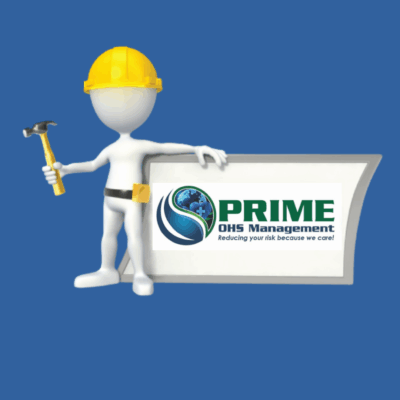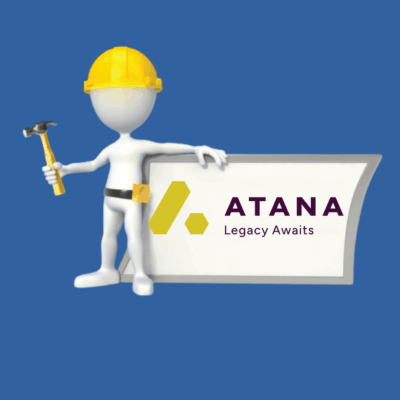In the construction industry, balancing cost and quality is a perennial challenge. In South Africa, this balance is particularly crucial due to the unique economic, regulatory, and social factors influencing the market. Achieving high-quality construction without overshooting budgets requires strategic planning, efficient resource management, and a deep understanding of the construction landscape. This blog explores how to effectively balance cost and quality in construction projects in South Africa, providing practical strategies, industry insights, and real-world examples.
Understanding the Cost-Quality Dilemma
Balancing cost and quality involves making decisions that impact the project’s financial viability and the standards of workmanship. High-quality construction typically entails higher costs due to better materials, skilled labor, and meticulous processes. Conversely, reducing costs often leads to compromises in quality, which can result in long-term issues such as structural failures, increased maintenance, and dissatisfied clients.
The Importance of Balancing Cost and Quality
- Client Satisfaction Delivering projects that meet or exceed client expectations in terms of quality, while staying within budget, enhances client satisfaction. Satisfied clients are more likely to provide repeat business and referrals.
- Reputation and Competitiveness Construction companies that consistently deliver high-quality projects within budget build a strong reputation and gain a competitive edge. This reputation attracts more clients and enables the company to command better prices.
- Long-Term Cost Savings Investing in quality construction can lead to long-term cost savings. High-quality materials and workmanship reduce the need for repairs and maintenance, extending the lifespan of the building.
- Compliance and Safety Adhering to quality standards ensures compliance with local regulations and enhances the safety of the construction project. Non-compliance can lead to legal issues, fines, and project delays.
Key Strategies for Balancing Cost and Quality
- Comprehensive Planning and Budgeting Thorough planning and budgeting are essential for balancing cost and quality. This involves detailed project planning, accurate cost estimation, and setting realistic quality benchmarks.
Steps for effective planning and budgeting:
- Conducting a detailed needs assessment and feasibility study.
- Developing a comprehensive project plan outlining scope, timelines, and milestones.
- Creating an accurate budget that accounts for all potential costs, including contingencies.
- Establishing quality standards and performance metrics.
- Value Engineering Value engineering is a systematic approach to improving the value of a project by optimizing its components and systems. This involves analyzing project functions to identify cost-saving opportunities without compromising quality.
Value engineering techniques:
- Reviewing design and construction methods for cost-effectiveness.
- Exploring alternative materials and technologies that offer similar performance at lower costs.
- Engaging stakeholders in brainstorming sessions to generate innovative solutions.
- Implementing best practices from previous projects.
- Efficient Resource Management Efficient management of resources such as labor, materials, and equipment is crucial for balancing cost and quality. Proper resource allocation ensures that high-quality standards are maintained without unnecessary expenditures.
Resource management strategies:
- Utilizing project management software to track and allocate resources efficiently.
- Scheduling labor and equipment to avoid downtime and maximize productivity.
- Procuring materials in bulk to benefit from volume discounts.
- Regularly monitoring resource usage to identify and address inefficiencies.
- Quality Control and Assurance Implementing stringent quality control and assurance measures throughout the construction process ensures that quality standards are met while controlling costs.
Quality control measures:
- Developing a quality management plan outlining inspection and testing procedures.
- Conducting regular site inspections and audits to ensure compliance with quality standards.
- Training workers on quality best practices and the importance of adhering to standards.
- Documenting and addressing quality issues promptly to prevent recurrence.
- Effective Communication and Collaboration Clear communication and collaboration among all project stakeholders are essential for balancing cost and quality. This ensures that everyone is aligned with project goals and understands their roles and responsibilities.
Communication strategies:
- Establishing regular project meetings to discuss progress, challenges, and solutions.
- Using collaborative tools and platforms to facilitate information sharing.
- Maintaining open lines of communication with clients to manage expectations and address concerns.
- Encouraging feedback and input from all team members.
- Leveraging Technology and Innovation Integrating advanced technologies and innovative solutions can enhance construction quality while optimizing costs. Technologies such as Building Information Modeling (BIM), drones, and 3D printing offer significant benefits.
Technological solutions:
- Using BIM for accurate project visualization, coordination, and cost estimation.
- Employing drones for site surveys, inspections, and progress monitoring.
- Implementing 3D printing for efficient construction of building components.
- Utilizing project management software for real-time tracking and reporting.
- Sustainable Building Practices Sustainable construction practices not only enhance environmental performance but can also reduce costs in the long term. Green building certifications such as Green Star South Africa provide a framework for sustainable construction.
Sustainable practices:
- Using energy-efficient materials and systems to reduce operational costs.
- Incorporating renewable energy sources such as solar panels.
- Implementing water-saving measures like rainwater harvesting and greywater recycling.
- Reducing waste through recycling and efficient material usage.
Case Studies of Balancing Cost and Quality
1. The Leonardo Building, Johannesburg
The Leonardo, Africa’s tallest building, is a prime example of balancing cost and quality. The project utilized advanced technologies such as BIM and prefabrication to optimize costs while maintaining high standards of quality. Comprehensive planning, efficient resource management, and stringent quality control measures ensured the successful completion of this iconic building.
2. Menlyn Maine, Pretoria
Menlyn Maine, a green city project, exemplifies the integration of sustainability with cost management. By incorporating energy-efficient systems, sustainable materials, and green building techniques, the project achieved high-quality standards and reduced long-term operational costs. The use of value engineering and effective stakeholder collaboration played a crucial role in balancing cost and quality.
3. V&A Waterfront Development, Cape Town
The V&A Waterfront development successfully balanced cost and quality through meticulous planning and innovative construction methods. The project’s emphasis on quality control, efficient resource management, and sustainable practices resulted in a high-quality development that met budgetary constraints and enhanced the area’s appeal.
Challenges in Balancing Cost and Quality
- Economic Fluctuations Economic instability can lead to fluctuating material prices and labor costs, making it challenging to maintain budget and quality standards. Construction companies must develop flexible strategies to adapt to these changes.
- Regulatory Compliance Ensuring compliance with local regulations and standards can increase project costs. Navigating regulatory requirements while maintaining quality requires careful planning and expertise.
- Skilled Labor Shortages A shortage of skilled labor can impact construction quality and increase costs due to higher wages and training expenses. Investing in workforce development and training is essential to address this challenge.
- Client Expectations Balancing client expectations with budget constraints can be difficult, especially when clients demand high-quality outcomes at lower costs. Clear communication and realistic goal-setting are crucial to managing client expectations.
Future Trends in Balancing Cost and Quality
- Increased Use of Prefabrication and Modular Construction Prefabrication and modular construction techniques are gaining popularity due to their cost-effectiveness and ability to maintain high-quality standards. These methods reduce construction time, minimize waste, and enhance quality control.
- Adoption of Smart Building Technologies Smart building technologies, such as IoT-enabled devices and automated systems, enhance building performance and reduce operational costs. These technologies provide real-time data for better decision-making and quality management.
- Emphasis on Sustainable Construction The focus on sustainability will continue to grow, driven by environmental concerns and regulatory requirements. Sustainable construction practices will become more prevalent, offering cost savings and enhanced quality.
- Integration of Artificial Intelligence (AI) AI technologies are being integrated into construction processes to optimize project management, resource allocation, and quality control. AI can predict potential issues, recommend solutions, and enhance overall project efficiency.
Conclusion
Balancing cost and quality in construction projects in South Africa requires a strategic approach, combining comprehensive planning, efficient resource management, and innovative technologies. By implementing value engineering, maintaining stringent quality control, and leveraging sustainable practices, construction companies can achieve high-quality outcomes within budget constraints. Despite challenges such as economic fluctuations and regulatory compliance, adopting flexible and adaptive strategies can enhance project success. As the industry evolves, staying ahead of emerging trends and continuously improving processes will be crucial for maintaining a competitive edge and delivering exceptional value to clients.
About Victor Terblanche
- Web |
- More Posts(28)








Leave a Reply